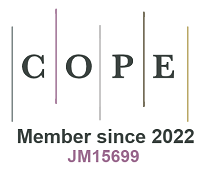A new method to improve CO2 photoreduction efficiency by regulating the electron localization of metal sites on 3D ordered macroporous frames assembled by 2D nanosheets
Keywords
The overuse of fossil fuels and CO2 greenhouse gas emissions have led to serious environmental challenges and energy dilemmas. Photochemical processes that utilize solar energy to drive the direct conversion of CO2 into high-value fuels or chemicals are seen as a promising solution[1-4]. Among them, photoreduction of CO2 to syngas is of particular interest, but it is limited by the slow carrier migration and the difficulty in regulating the affinity between the catalytic site and the reaction intermediates, resulting in low product yields[5-8]. Although photocarrier transport can be facilitated by optimizing the material structure, regulating the interaction between the reaction intermediates and the catalytic sites to achieve a high CO yield and an ideal CO/H2 ratio is still a current challenge. Given the critical role of abundant electrons in the metal sites for stabilizing the reaction intermediates and promoting chemical bond breaking and recombination, fine-tuning the electronic localization of the metal sites while maintaining the nanostructure of the catalysts may be able to adjust the activation mechanism of the interfacial molecules, and thus enhance the efficiency of syngas generation kinetics[9-14].
To solve this problem above, Lyu et al. constructed a 3D ordered macroporous framework by assembling 2D nanosheets, termed 3DOM Co-SNS[15]. Three-dimensional structures can reduce aggregation, expand the exposure of active sites, promote mass transfer, etc.[16]. The 3DOM-SNS materials assembled from nanosheets were successfully synthesized by employing a metal-organic framework (MOF)-mediated phase transition strategy [Figure 1A]. Furthermore, transmission electron microscopy (TEM) revealed time-dependent morphological changes in 3DOM Co-OHNS particles. After four minutes of transformation, a core–shell structure emerged, featuring a ZIF-67 core surrounded by a Co(OH)2 nanosheet shell; and after 10 min, the core disappeared completely and transformed into a macroporous framework assembled from nanosheets [Figure 1B]. Finally, using extended X-ray absorption fine structure (EXAFS) and X-ray absorption near edge structure (XANES) analysis techniques, we have deeply probed the changes in the coordination surroundings of the Co sites during the phase transition, and clearly pointed out the transition from Co–N coordination to Co–O coordination [Figure 1C-E].
Figure 1. (A) Synthetic route illustration for 3DOM Co-OHNS and (B) its structural transformation observed via TEM; (C) XANES spectra at the Co K-edge; (D) Fourier-transformed k3-weighted EXAFS data, and (E) corresponding wavelet-transformed analyses for SOM ZIF-67, 3DOM Co-OHNS, and selected controls. This figure is quoted with permission from Lyu et al.[15]. TEM: Transmission electron microscopy; XANES: X-ray absorption near edge structure; EXAFS: extended X-ray absorption fine structure.
Under visible light irradiation, all 3DOM-NS samples exhibited high syngas yields, with 3DOM Co-SNS performing particularly well, with a syngas yield of up to 347.3 μmol·h-1 [Figure 2A]. EXAFS analysis identified a distinct peak at ~1.8 Å corresponding to Co–S coordination, while the absence of notable Co–Co and Co–O interactions ruled out the formation of metallic cobalt or cobalt oxide species [Figure 2B and C]. Interestingly, the CdS@3DOM Co-SNS system enabled the efficient conversion of 5-hydroxymethylfurfural, furfuryl alcohol, and benzyl alcohol into 2,5-furandicarboxylic acid, 1,2-bis(2-furyl)-1,2-ethanediol, and 1,2-diphenyl-1,2-ethanediol, respectively, along with syngas production - highlighting its promise for enhanced solar energy utilization [Figure 2D]. In a large-scale outdoor flow reactor, 3DOM Co-SNS demonstrated a syngas yield of up to 1,150.7 μmol·h-1 under direct natural sunlight with a CO/H2 ratio of 1.0, fully demonstrating its great potential for practical applications [Figure 2E and F].
Figure 2. (A) CO2 photoreduction activity; (B) Fourier-transformed k3-weighted EXAFS curves; (C) Corresponding wavelet-transformed spectra for 3DOM Co-SNS and control materials; and (D) Dual-function catalysis involving CO2 reduction and biomass oxidation using CdS@3DOM Co-SNS. (E) This photograph shows the conversion equation of biomass-derived molecules; (F) Photographs of the reaction system and photocatalytic performance under outdoor sunlight irradiation in March and April 2024 at Wushan Road (23°8′n, 113°17′e), Guangzhou, China. This figure is quoted with permission from Lyu et al.[15]. EXAFS: Extended X-ray absorption fine structure.
In situ infrared spectroscopy analysis showed that multiple intermediate characteristic peaks were gradually revealed on the surface of 3DOM Co-SNS with increasing light time, but no adsorption bands of CO were observed, implying a weak interaction between CO and Co sites [Figure 3A]. Density-functional theory (DFT) calculations revealed the pathways and free energy changes of CO2 conversion reactions on different cobalt-based coordination structures, pointing out that the lowest energy barrier for CO2 reduction was observed on the Co3S4 model, which exhibited the optimal CO2 conversion potential [Figure 3B]. In addition, comparing the adsorption configurations of HCOO* on the surfaces of Co3S4 and Co3O4, The O–Co interaction in the adsorbed HCOO* intermediate on Co3S4 was found to be particularly strong, likely contributing to C–O bond activation through enhanced electron transfer from the cobalt site [Figure 3C]. DFT calculations were employed to explore CO2 adsorption on various catalysts, aiming to elucidate how electron localization influences catalytic performance [Figure 3D]. The local electronic structure of the catalysts was probed using low-frequency and low-charge techniques, and it was found that modifying the neighboring metal or non-metal atoms effectively regulated the electronic localization at Co sites, leading to a broad charge distribution ranging from -0.84 to 0.46 eV. By tuning electronic localization, the catalyst’s affinity toward adsorbed molecules can be modified, which directly influences their subsequent adsorption and activation.
Figure 3. (A) Real-time FTIR spectra of 3DOM Co-SNS photocatalyzed CO2 reduction; (B) Free energy diagrams of adsorbates during CO2 reduction on Co3S4, Co(OH)2, and Co3O4; and (C) Integrals of Δρ in the plane of the Z-direction along the Z-direction of Co3S4-HCOO* and Co3O4-HCOO*, with the blue and green regions representing the electron depletion and electron accumulation, respectively; the inset of (D) displays the visual charge distribution patterns across different Co-based catalysts. This figure is quoted with permission from Lyu et al.[15]. FTIR: Fourier transform infrared spectroscopy.
The investigation of the mechanism reveals that the highly electronically localized Co sites can enhance the interaction with the HCOO intermediate, weaken the C–O bond, and thereby reduce the energy barrier of CO2 conversion. By changing the atoms around the Co site, the degree of electronic localization can be precisely regulated. In addition, the three-dimensional ordered macroporous framework and two-dimensional nanosheet structure of the catalyst not only enhance the accessibility of active sites but also improve the transport efficiency of photogenerated carriers. The DFT calculation and experimental results show that the HCOO intermediate on Co3S4 has a longer C–O bond and is more prone to breakage, which is closely related to the high electronic localization of the Co site. 3DOM Co-SNS exhibits higher CO2 adsorption capacity and more efficient photogenerated carrier transfer ability.
In summary, this study presents a series of ordered macroporous catalysts constructed from nanosheets through a MOF-mediated phase transition strategy. The tailored nanostructure not only improves active site accessibility but also promotes efficient transport of photoinduced charge carriers. Notably, the adaptable phase transition method allows for precise modulation of electronic localization at Co centers by tuning adjacent metal or non-metal species. DFT calculations reveal that in 3DOM Co-SNS, enhanced electron localization at Co sites strengthens dyz/dxz–p and s–s orbital interactions with HCOO*, thereby facilitating C–O bond cleavage. This work provides valuable guidance for developing advanced CO2 reforming catalysts and offers a new pathway for regulating key intermediate behavior via electronic structure engineering at active sites.
DECLARATIONS
Authors’ contributions
Writing - original draft, supervision, formal analysis, supervision: Jing, L.
Supervision, formal analysis: Yang, L.
Writing - review and editing, supervision: Huang, Z.
Writing - review and editing, supervision, funding acquisition: Hu, J.
Availability of data and materials
Not applicable.
Financial support and sponsorship
This research was funded by the Natural Sciences and Engineering Research Council of Canada, Discovery Grant (grant number: 10040079) and the Key project of the National Natural Science Foundation of China (grant numbers 32430071 and 32071713).
Conflicts of interest
Hu, J. is Section Editor of the journal Chemical Synthesis. Hu, J. was not involved in any steps of editorial processing, notably including reviewers’ selection, manuscript handling or decision-making. Yang, L. is affiliated with PerfectLight (Zhenjiang) Intelligent Equipment Co., LTD. The other authors declare that there are no conflicts of interest.
Ethical approval and consent to participate
Not applicable.
Consent for publication
Not applicable.
Copyright
© The Author(s) 2025.
REFERENCES
1. Li, X.; Sun, Y.; Xu, J.; et al. Selective visible-light-driven photocatalytic CO2 reduction to CH4 mediated by atomically thin CuIn5S8 layers. Nat. Energy. 2019, 4, 690-9.
2. Stanley, P. M.; Ramm, V.; Fischer, R. A.; Warnan, J. Analysis of metal–organic framework-based photosynthetic CO2 reduction. Nat. Synth. 2024, 3, 307-18.
3. Wu, Y. A.; McNulty, I.; Liu, C.; et al. Facet-dependent active sites of a single Cu2O particle photocatalyst for CO2 reduction to methanol. Nat. Energy. 2019, 4, 957-68.
4. Gong, E.; Ali, S.; Hiragond, C. B.; et al. Solar fuels: research and development strategies to accelerate photocatalytic CO2 conversion into hydrocarbon fuels. Energy. Environ. Sci. 2022, 15, 880-937.
5. Stanley, P. M.; Su, A. Y.; Ramm, V.; et al. Photocatalytic CO2-to-syngas evolution with molecular catalyst metal-organic framework nanozymes. Adv. Mater. 2023, 35, 2207380.
6. Lyu, W.; Liu, Y.; Zhou, J.; et al. Modulating the reaction configuration by breaking the structural symmetry of active sites for efficient photocatalytic reduction of low-concentration CO2. Angew. Chem. Int. Ed. Engl. 2023, 62, e202310733.
7. Zhou, W.; Wang, X.; Zhao, W.; et al. Photocatalytic CO2 reduction to syngas using metallosalen covalent organic frameworks. Nat. Commun. 2023, 14, 6971.
8. Qian, G.; Lyu, W.; Zhao, X.; et al. Efficient photoreduction of diluted CO2 to tunable syngas by Ni-Co dual sites through d-band center manipulation. Angew. Chem. Int. Ed. Engl. 2022, 61, e202210576.
9. Li, X.; Yu, J.; Jaroniec, M.; Chen, X. Cocatalysts for selective photoreduction of CO2 into solar fuels. Chem. Rev. 2019, 119, 3962-4179.
10. Maeda, K. Metal-complex/semiconductor hybrid photocatalysts and photoelectrodes for CO2 reduction driven by visible light. Adv. Mater. 2019, 31, 1808205.
11. Pan, Q.; Abdellah, M.; Cao, Y.; et al. Ultrafast charge transfer dynamics in 2D covalent organic frameworks/Re-complex hybrid photocatalyst. Nat. Commun. 2022, 13, 845.
12. Zhou, Y.; Che, F.; Liu, M.; et al. Dopant-induced electron localization drives CO2 reduction to C2 hydrocarbons. Nat. Chem. 2018, 10, 974-80.
13. Wang, Y.; Wang, K.; Meng, J.; et al. Constructing atomic surface concaves on Bi5O7Br nanotube for efficient photocatalytic CO2 reduction. Nano. Energy. 2023, 109, 108305.
14. Yan, S.; Peng, C.; Yang, C.; et al. Electron localization and lattice strain induced by surface lithium doping enable ampere-level electrosynthesis of formate from CO2. Angew. Chem. Int. Ed. Engl. 2021, 60, 25741-5.
15. Lyu, W.; Liu, Y.; Chen, D.; Wang, F.; Li, Y. Engineering the electron localization of metal sites on nanosheets assembled periodic macropores for CO2 photoreduction. Nat. Commun. 2024, 15, 10589.
Cite This Article
How to Cite
Download Citation
Export Citation File:
Type of Import
Tips on Downloading Citation
Citation Manager File Format
Type of Import
Direct Import: When the Direct Import option is selected (the default state), a dialogue box will give you the option to Save or Open the downloaded citation data. Choosing Open will either launch your citation manager or give you a choice of applications with which to use the metadata. The Save option saves the file locally for later use.
Indirect Import: When the Indirect Import option is selected, the metadata is displayed and may be copied and pasted as needed.
About This Article
Copyright
Data & Comments
Data





















Comments
Comments must be written in English. Spam, offensive content, impersonation, and private information will not be permitted. If any comment is reported and identified as inappropriate content by OAE staff, the comment will be removed without notice. If you have any queries or need any help, please contact us at support@oaepublish.com.